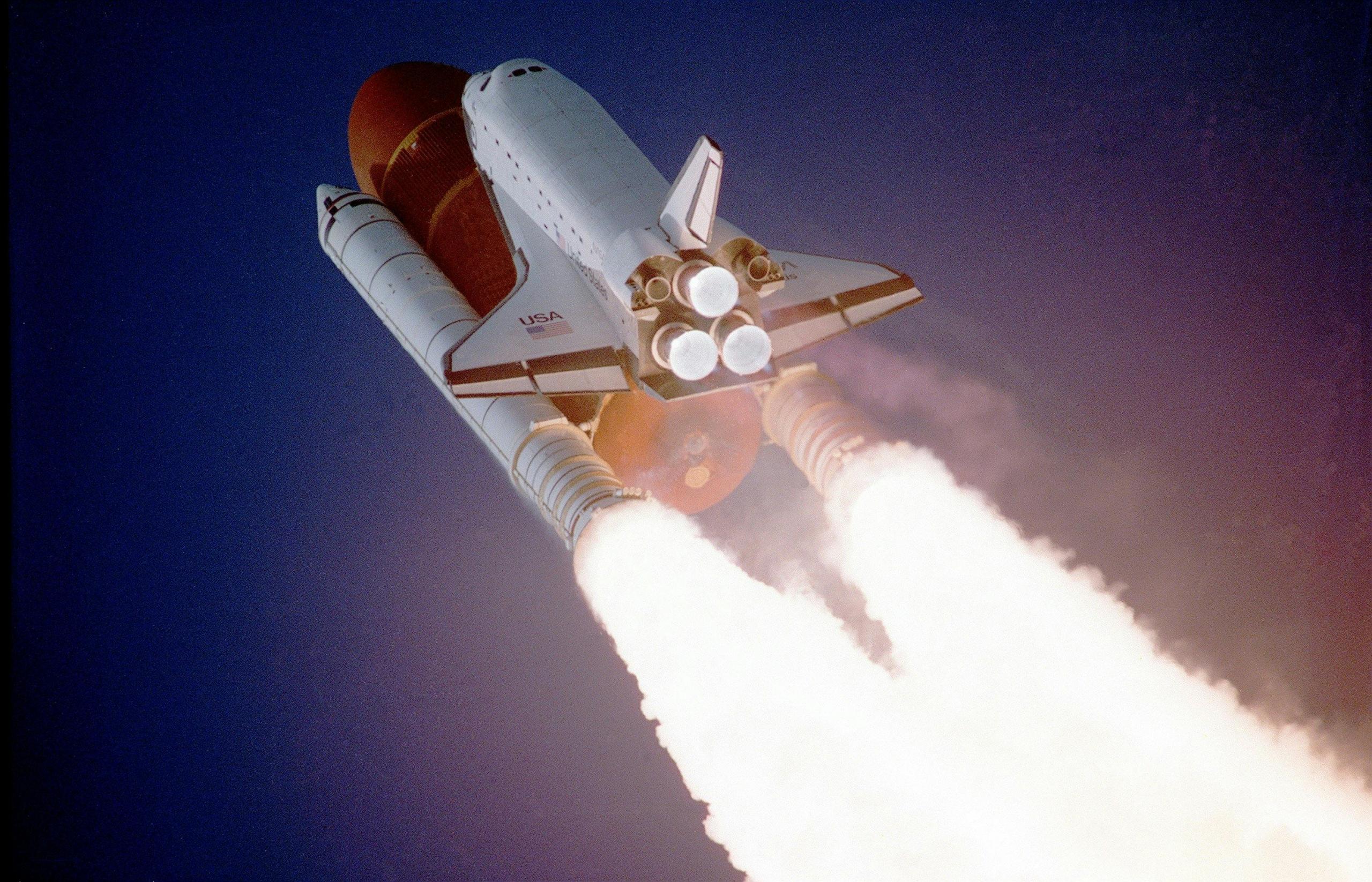Space is a challenging realm to navigate - the harsh environment is literally “out of this world” and ingenuity is essential to building tools for exploration. At the forefront of space exploration are organizations like NASA, who call upon the best and brightest to engineer spacecraft.
The Canadarm, one of the most iconic symbols of engineering and robotics, is one example of genius innovation from a relatively lesser known Canadian, Anthony Zubrzycki. His creation was a crucial tool used for over 30 years by NASA to complete a variety of tasks.
So what exactly was the Canadarm, and who is Anthony Zubrzycki? Let’s take a closer look at one of Canada’s most significant contribution to space exploration and the individual who made it possible.
The Canadarm, officially known as the “Shuttle Remote Manipulator System” (SRMS), is a robotic arm that can perform delicate operations and manoeuvres in space. It was developed in the 1970s for NASA’s Space Shuttle program.
The Canadarm made its debut on November 13, 1981 on the second flight of the Space Shuttle program (STS-2).
Canadians have been making scientific discoveries across different fields throughout the country's history.

Who is Anthony Zubrzycki?
Anthony “Tony” Zubrzycki was an Polish-Canadian engineer passionate about innovation and problem-solving. With expertise in robotics and mechanics, he was an ideal leader for the project. He understood the complexities of robotics and the need to create something sophisticated and strong enough to withstand the extreme conditions of space.
Zubrzycki successfully took the challenge and designed a robotic arm lightweight and capable of perform tasks like moving satellites and performing delicate repairs. Zubrzycki originated the concept for the Canadarm End Effector after finding inspiration in an elastic band around his fingers. He presented the concept ot NASA officials, and the end effector was built based on Zubrzycki's concept.
With a team, he spent years developing the Canadarm, continually iterating the design after feedback and testing, ensuring it met NASA’s stringent requirements.
Zubrzycki’s work on the Canadarm made him one of the country’s most important and recognized engineers. His work reflects the power of perseverance and innovation in engineering and robotics.
David Schindler is another Canadian scientist that made remarkable contributions to the world. Learn more about the Experimental Lakes Areas.
What does the Canadarm do?
In 1993, a second generation robot known as Canadarm2 was created, and is even more strong and versatile. Developed for the International Space Station (ISS), Canadarm 2 is capable of scaling the exterior of the ISS and performing a wide range of tasks that are essential to the operation of the space station.
The iconic image of the Canadarm, with its iconic “Canada” logo protruding into the vast expanse of space, is one that is synonymous with space exploration and groundbreaking engineering.
Why was the Canadarm Created?
During the 1970s, NASA developed its Space Shuttle program to revolutionize space travel. A need arose for some sort of robotic device to perform different operations in space. The Canadian government took up the challenge of this project as a means of showcasing the country’s technological expertise.
The National Research Council of Canada (NRC) oversaw the project, and and recruited the help of SPAR Aerospace, a Canadian aerospace engineering company. Anthony Zubrzycki was tapped to lead the design team.


Why Was Canada Chosen by NASA to build the Canadarm?
NASA wanted international involvement, and so invited the Canadian government to participate in the 1969 space shuttle program. Initially, NASA considered requesting Canada to build a tool for deploying satellites, but became interested in a robot invention instead after becoming aware of a fuel injection robot for a nuclear reactor.
In 1974 NASA awarded Canada the contract to design a Shuttle Remote Manipulator System and an associated simulator facility. Canada had no space agency at the time, so the National Research Council of Canada coordinated a team led by SPAR Aerospace.
Another incredible scientific innovation from the minds of Canadian scientists is the discovery of insulin by Banting and Best.
Famous astronaut Chris Hadfield piloted the Canadarm during mission STS-74.
The Canadarm was deployed from the cargo bay of Space Shuttle Columbia by the crew of mission STS-2.
Canadarm could lift over 30,000 kilograms using less electricity than a teakettle.
What are the Specifications of the Canadarm?
- 15 metres long
- Joints on arm were similar to a human’s wrist, elbow, and shoulder
- Each joint had a motor-driven gear box that enabled the Canadarm to bend and turn with flexibility
- TV camera on the “elbow” of the Canadarm showed astronaut what was happening; hand controllers and display panels were available for controller to use
- Canadarm weighed 410 kilograms
- Canadarm could lift up to 266,000 kilograms in space
- Composed of titanium, stainless steel, and ultra-high-modulus epoxy
- Canadarm’s sleeve insulated the machinery and thermostatically controlled electric heaters protected other important electronics
What is the Canadarm 2?
After the original Canadarm was decommissioned, the Canadarm2 was created to continue ongoing work on the International Space Station. Inspired by the Canadarm1, Canadarm2 was built by Macdonald, Dettweiler, and Associates in Brampton, Ontario.
The 17-metre long Canadarm2 was launched in 2001. The robotic arm completes similar tasks to the Canadarm, such as:
- performing station maintenance
- moving supplies, equipment, and astronauts
- grappling vehicles and birthing them to the ISS.
The Canadarm2 can easily be instructed to move around the International Space Station. Each of its ends can be used to anchor the arm while the other end carries out various tasks. Canadarm2 anchors itself by being secured to a unique fixture called a power data grapple fixture. Its parts can be replaced in space.
The Canadarm2 is will never return back to earth, and must be maintained in space.
The Canadarm2 can handle loads as strong as 116,000 kilograms, or 8 schoolbuses.
Canadarm2 development has led to the creation of new technologies, including the neuroArm, which is the world's first robot capable of performing surgery inside an MRI machine.
How do I Pursue a Career in Robotics and Engineering?
If you have an interest in robotics and enjoy designing technological solutions to solve problems, you should certainly consider a career in robotics and engineering.
Becoming an engineer like Zubrzycki takes years of investment in learning at the university level and beyond. Whether you want to work in the field of robotics, or prefer to problem solve in other areas, an engineering pathway may be right for you!
To become an engineer, you will need to determine what kind of engineering you want to focus on:
- Chemical Engineering
- Civil Engineering
- Mechanical Engineering
- Chemical Engineering
- Computer Engineering
Earning the professional engineer designation (P. Eng.) requires you to have an undergraduate degree. Once your undergraduate degree is finished, you must go through the steps to become licensed.
You can also choose to pursue graduate studies in engineering if you want to engage in research or teach in a faculty of engineering. You can earn a Master’s or Doctorate degree in the area of engineering you specialize in.

Where Can I Get Academic Help?
If you are already in an engineering program or are still in secondary school and want to perform as best you can in school to get into a competitive school, you may want to consider hiring a tutor. Engineering is a rigorous interdisciplinary field, involving advanced studies in mathematics and science - so if you find yourself struggling to keep up in certain classes, it is perfectly normal.
Finding the right tutor is easy with Superprof Canada. Superprof is a site that connects students with tutors across different fields. You can use the search tool on the site to find tutors near you or that can work with you virtually.
Get inspired by the collaborative effort it took to develop pablum at Toronto's Hospital for Sick Children.
Summing it Up
The story of the Canadarm is one of engineering innovation and ingenuity. The Canadarm played a key role in advancing space exploration and research during the 1980s and 1990s, and remains a major milestone in Canadian history.
The Canadarm2 continues to do the important work of supporting space and exploration at the International Space Station.
Zubrzycki, the mind behind the Canadarm, remains an inspiration to aspiring engineers and scientists in Canada. Who knows, maybe pursuing a career in engineering and science will lead you to become the next great Canadian innovator!
















